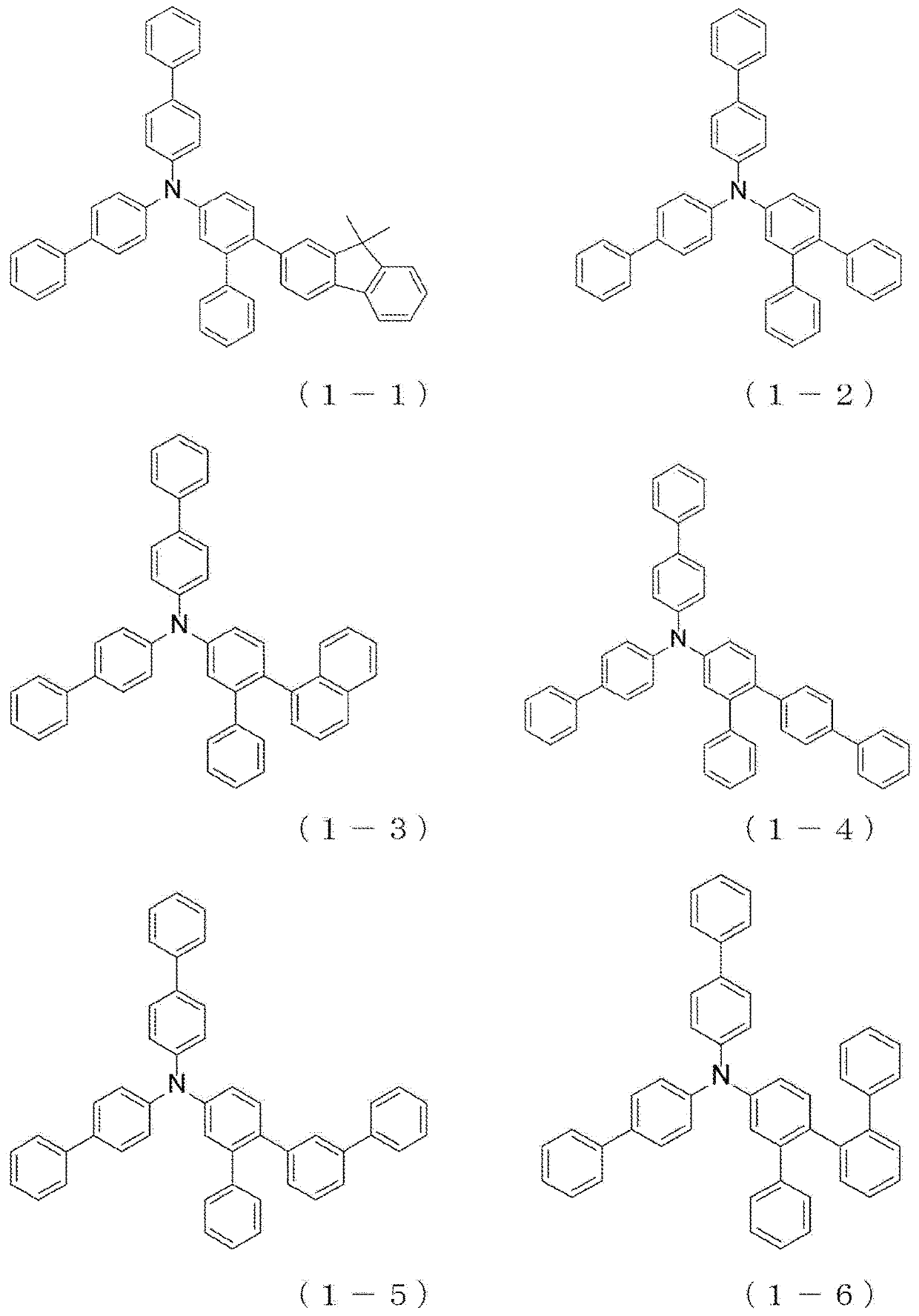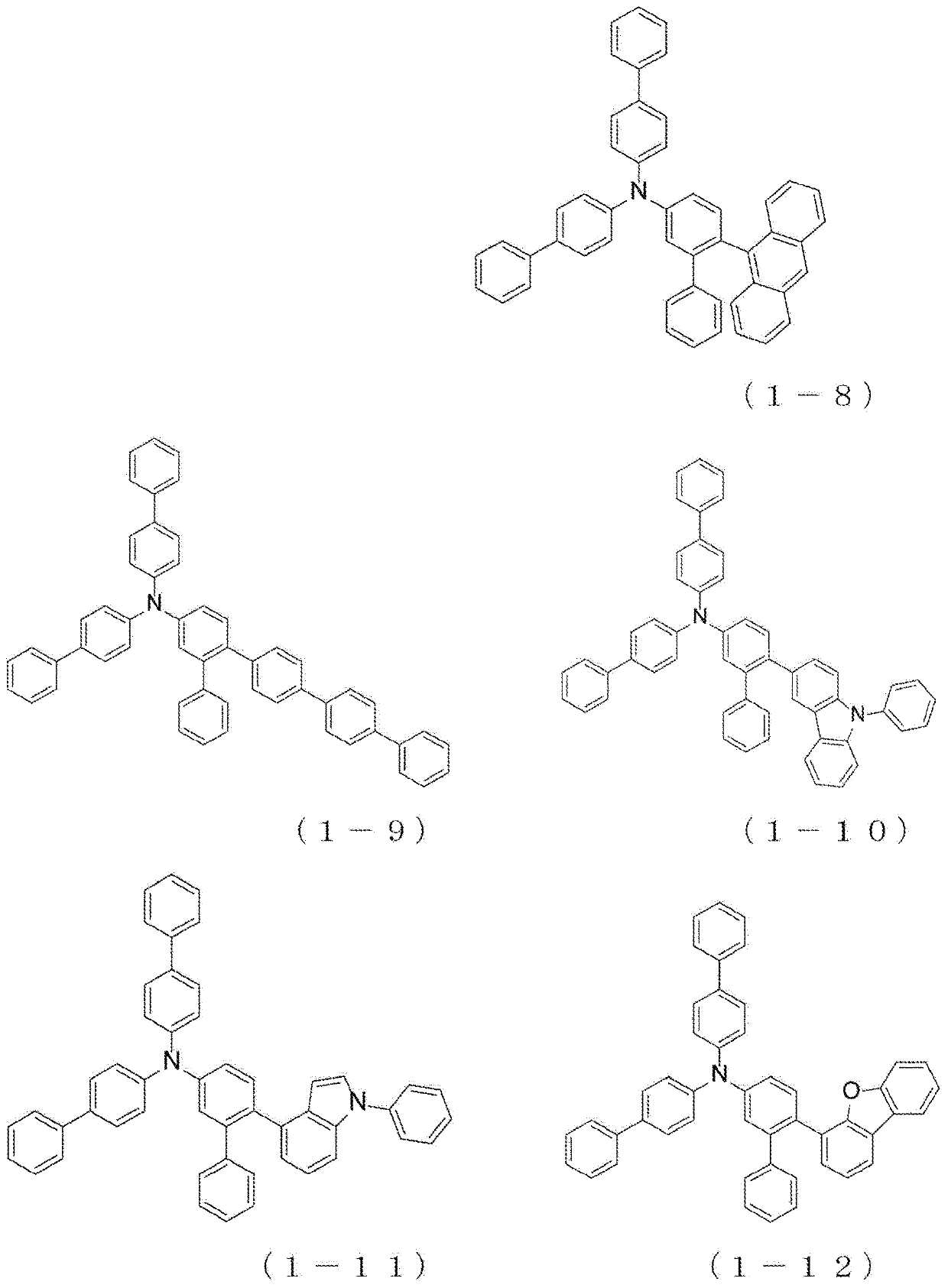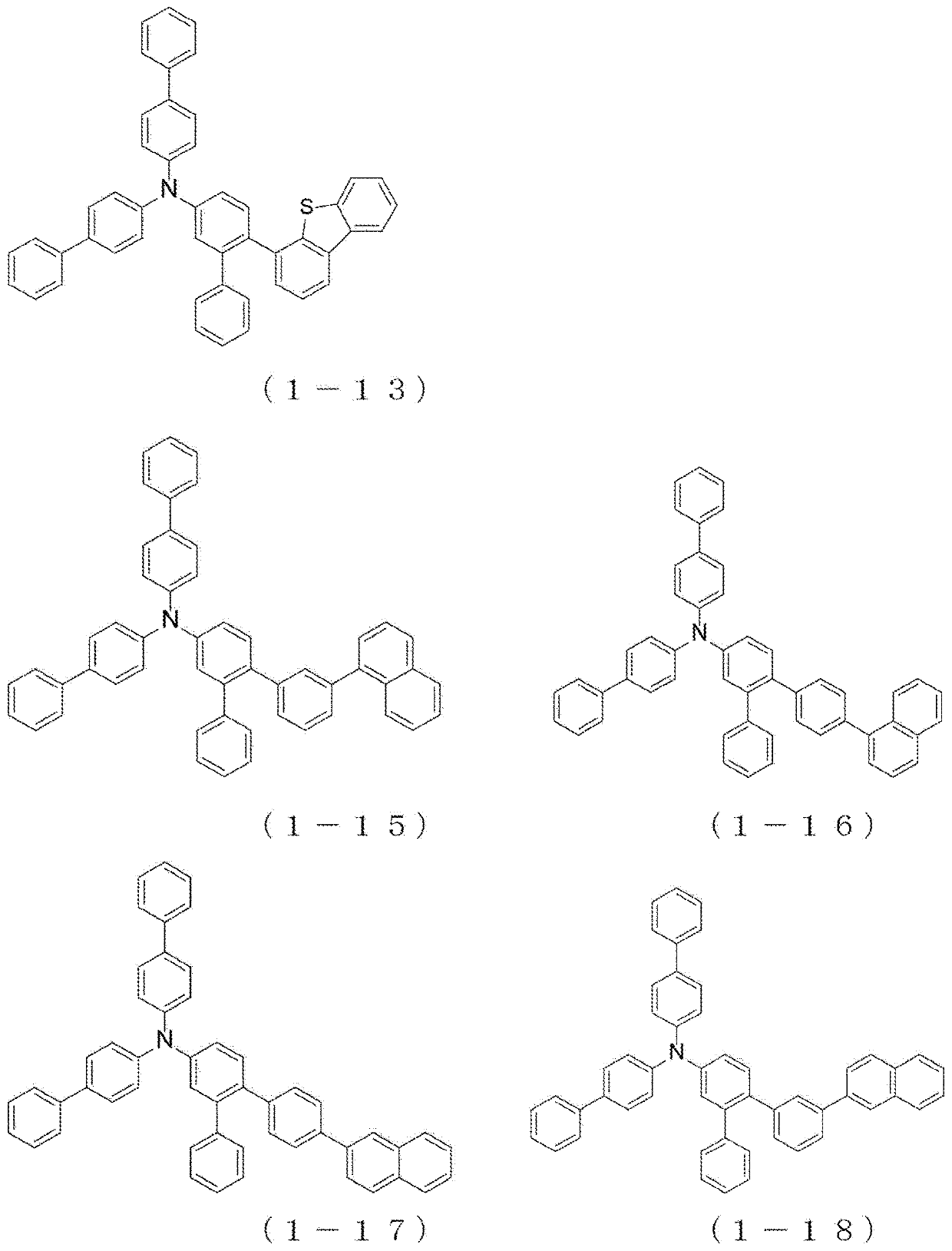Organic electroluminescent element
An electroluminescent element and organic technology, applied in electrical elements, luminescent materials, electro-solid devices, etc., can solve the problems of insufficient degree, low driving voltage luminous efficiency, etc.
- Summary
- Abstract
- Description
- Claims
- Application Information
AI Technical Summary
Problems solved by technology
Method used
Image
Examples
Embodiment
[0346] Hereinafter, an embodiment of the present invention will be specifically described by way of examples, but the present invention is not limited to the following examples.
Synthetic example 1
[0347]
[0348] Synthesis of bis(biphenyl-4-yl)-(6-phenylbiphenyl-3-yl)amine:
[0349] In a nitrogen-purged reaction vessel add
[0350] Bis(biphenyl-4-yl)-(6-bromobiphenyl-3-yl)amine 11.8g,
[0351] Toluene 94mL,
[0352] Phenylboronic acid 2.7g,
[0353] Furthermore, an aqueous solution obtained by dissolving 5.9 g of potassium carbonate in 36 mL of water beforehand was added to obtain a mixed liquid. Nitrogen gas was blown while irradiating the mixture with ultrasonic waves for 30 minutes.
[0354] Next, 0.74 g of tetrakis(triphenylphosphine)palladium was added, heated, and stirred at 72° C. for 18 hours. After cooling to room temperature, the organic layer was obtained by liquid separation. After washing with water and washing with saturated saline in this order, it was dried using anhydrous magnesium sulfate, and concentrated. A crude product is thus obtained. Next, purification using column chromatography was performed. As a result, 8.4 g of a white powder of c...
Synthetic example 2
[0361]
[0362] Synthesis of bis(biphenyl-4-yl)-{6-(naphthyl-1-yl)biphenyl-3-yl}amine:
[0363] In Synthesis Example 1, 1-naphthylboronic acid was used instead of phenylboronic acid, and the reaction was carried out under the same conditions. As a result, 9.2 g of white powder of compound 1-3 was obtained (61% yield).
[0364] [chem 21]
[0365]
[0366] For the obtained white powder, its NMR was used to identify the structure. use 1 H-NMR (CDCl 3 ) detected the following 33 hydrogen signals.
[0367] δ(ppm)=7.84-7.87(3H)
[0368] 7.67-7.83(6H)
[0369] 7.26-7.64(18H)
[0370] 7.02-7.04(6H)
PUM
 Login to View More
Login to View More Abstract
Description
Claims
Application Information
 Login to View More
Login to View More - R&D
- Intellectual Property
- Life Sciences
- Materials
- Tech Scout
- Unparalleled Data Quality
- Higher Quality Content
- 60% Fewer Hallucinations
Browse by: Latest US Patents, China's latest patents, Technical Efficacy Thesaurus, Application Domain, Technology Topic, Popular Technical Reports.
© 2025 PatSnap. All rights reserved.Legal|Privacy policy|Modern Slavery Act Transparency Statement|Sitemap|About US| Contact US: help@patsnap.com



